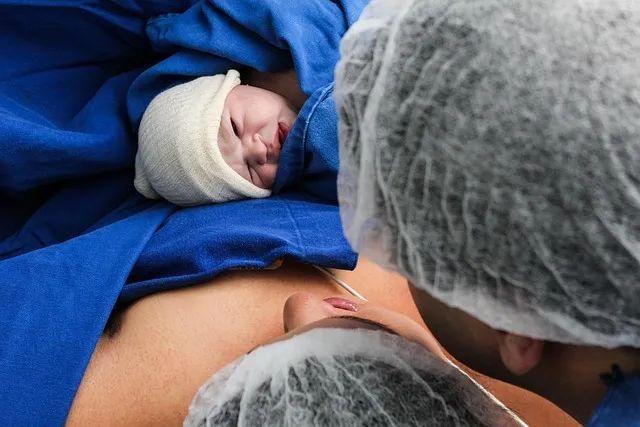Can you reduce labor tests by choosing 3G IVF + surrogacy? Uncovering the truth about labor and delivery tests with PGS/PGD technology

The Eugenic Code of Three-Generation IVF and Surrogate Motherhood
When three-generation IVF technology (PGT) meets surrogate motherhood, it seems to provide double insurance for reproductive safety: embryos undergo chromosome screening (PGS) and genetic diagnosis (PGD), and then the gestation is completed by a rigorously screened surrogate mother. But data shows that even then, 100 percent of standard labor tests still need to be completed during the surrogacy cycle – a 2023 New England Journal of Medicine study confirms that PGT technology only prevents 60 percent of birth defects, and maternal environmental factors may still contribute to 40 percent of pregnancy risks.
The Scientific Basis for Three-Generation IVF + Surrogacy ≠ Obstetrical Exemption
Technical boundaries of embryo screening
Even if chromosomally normal embryos are screened by PGS technology:
Chimerism escape: about 5% of chimeric abnormalities cannot be detected by trophoblast biopsy
Single-gene disease limitations: PGD can detect only 5000 known genetic diseases
Epigenetic variation: mutations in non-coding regions such as abnormal DNA methylation cannot be screened for
Surrogate Mother Environmental Variables
Surrogate mother’s uterine environment is independent of genetic parents:
Placental interface disorders: 30% increased risk of preeclampsia due to abnormal molting
Metabolic disturbances: surrogate mother BMI >25 doubles the risk of fetal neural tube defects
Cross-geographic differences: time zone changes affect hormonal rhythms, requiring enhanced ultrasound monitoring
List of labor and delivery tests that must be intensified during the surrogate cycle
Specialized screening in early pregnancy (before 12 weeks gestation)
Surrogate mother immunocompatibility testing:
NK cell activity assay (>18% requires immunomodulation)
Antiphospholipid antibody profile (to prevent thrombotic placental lesions)
Three-dimensional uterine artery blood flow assessment:
Pulsatility index (PI) <2.3 suggests good perfusion Resistance index (RI) >0.8 requires initiation of heparin therapy
Mid-pregnancy in-depth diagnosis (16-24 weeks gestation)
Enhanced noninvasive DNA (NIPT-PLUS):
Expanded detection from 3 to all 23 pairs of chromosomes
Recognizes microdeletions/microduplications >7Mb
Fetal heart-specific ultrasound:
Focuses on ventricular septal defects (VSD) and aortic constriction
Fetal cardiac function monitoring for surrogate mothers (MPI <0.48)
Late pregnancy monitoring upgrade (after 28 weeks of pregnancy)
Umbilical artery Doppler monitoring:
S/D ratio >3.0 suggests placental insufficiency
Fetal middle cerebral artery testing every two weeks (MCA-PSV >1.5MoM)
Dynamic assessment of glucose metabolism:
Continuous glucose monitoring (CGM) instead of traditional OGTT test
Time-to-Regularity (TIR) of target blood glucose >90
7 Risk Prevention and Control Systems Exclusive to Surrogate Mothers
Cross-regional medical coordination:
Establishment of cross-border medical data sharing platforms such as China-US/China-Russia
Hormone synchronization protocols with jet lag management (using long-acting GnRH agonists)
Legal Compliance Check:
Audit of labor and delivery liability clauses in surrogacy agreements
Legal confirmation of medical decision-making authority in case of fetal anomalies
Psychosocial support:
Monthly Edinburgh Postnatal Depression Scale (EPDS) screening
Third-party counselor intervention and communication
Nutritional Metabolic Modulation:
Customized micronutrient supplementation (e.g., selenium >60 μg/dL)
Omega-3 fatty acid dynamic monitoring (erythrocyte membrane DHA>6%)
Infection Prevention and Control Network:
TORCH decanalysis (including Zika virus, COVID-19 antibody)
Molecular Diagnostic Alternative Cultures for Group B Streptococcus (GBS)
Environmental toxin screening:
Hair heavy metal testing (mercury <1μg/g, lead <0.5μg/g)
Bisphenol A (BPA) urine concentration monitoring (<3ng/mL)
Emergency Preparedness System:
24-hour remote fetal heart monitoring system (NST/BPP)
Development of a multidisciplinary consultation (MDT) rapid response process
Cognitively disruptive clinical data: PGT+ surrogacy still requires 100% obstetric testing
The 2024 International Federation for Reproductive Medicine (IFFS) report shows:
Chromosomally normal embryos in surrogacy cycles:
Structural abnormalities still occur in 2.1% of fetuses
Fetal growth restriction (FGR) occurs in 8.7% of cases
Complications due to surrogate mother factors:
12.3% incidence of hypertensive disorders in pregnancy
Preterm birth rate 9.8% (3.2 percentage points higher than self conception)
Typical case:
California case: fetal neural tube malformation due to surrogate mother’s vitamin B12 deficiency in embryos screened by PGT
Russian case: the surrogate mother’s failure to take regular iron supplements led to severe placental calcification and emergency C-section at 34 weeks.
Intelligent labor and delivery technology empowers surrogate pregnancy management
AI Ultrasound Diagnostic System
Automatic measurement of fetal nuchal translucency (NT) thickness, error <0.1mm
Intelligent identification of fetal facial deformity (detection rate 98.5%)
Blockchain maternity records
Non-tamperable electronic medical records (including full data of genetic parents, embryos and surrogate mothers)
Cross-institutional mutual recognition of test results, avoiding repeated testing
Wearable monitoring devices
Intelligent fetal heartbeat monitoring belt: real-time transmission of contraction pressure curve
Non-invasive blood glucose monitor: automatically record blood glucose fluctuations every 5 minutes
Essential Guide for Genetic Parents
Review of contract terms:
Clearly agree on the 18 core maternity tests that surrogate mothers must complete
Agree on the treatment process and cost sharing in case of fetal anomalies.
Cross-Cultural Communication Strategies:
Hiring a professional medical interpreter to participate in important labor and delivery tests
Respect for the surrogate mother’s religious beliefs and medical choices
Contingency Funding:
Set up an emergency medical fund of at least $20,000.
Purchase specialized commercial insurance to cover fetal abnormalities
Remember: Even if you choose the technological path of IVF + surrogacy, labor and delivery testing is still the last line of defense in guarding your new baby. Only by combining advanced reproductive technology with rigorous maternity testing can every family welcome the birth of a healthy baby!






